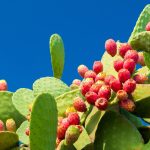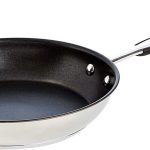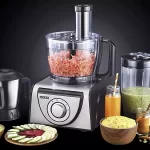Gnocchi vs Pasta - What's the difference?

Pasta is one of those foods that can easily become addictive for us. It’s so tasty and you can do a lot of different things with it. From their own sauce to their own casseroles and pasta dishes, there are plenty of options.
Then there are the gnocchi. Most people think that gnocchi is pasta, but the truth is that they are not. Gnocchi and pasta are not really the same, although they are used in similar ways and can often be substituted for each other. If you are a pasta lover, you should try the gnocchi!
What is the difference between gnocchi and pasta?
Gnocchi are made with potatoes, flour, eggs, and sometimes cheese. Pasta is traditionally made with wheat flour and water. Gnocchi are shaped like solid little balls, but the pasta is rolled into various shapes, such as long noodles, shells, or ribbons.
In this guide, we’ll go over the classic breakdown of gnocchi and pasta. We’ll go through the gnocchi and then the pasta, and put them back together in a quick summary for reference and to really narrow down the differences.
Read on to learn the differences between gnocchi and pasta.
The differences between gnocchi and pasta
When trying to differentiate between gnocchi and pasta, the most notable thing to keep in mind is that they are made with different ingredients.
We’ll dig a little deeper into this in general, but if you’re looking for a quick answer to the question, this is it!
What are gnocchi?
Gnocchi is very similar to pasta and could even be considered a variety of it. However, it is not made with typical pasta ingredients.
This is a small, thick combination that almost resembles miniature meatballs.
They are a bit heavier than typical pasta, but are often used just like pasta.
If you need a gluten-free or healthier pasta option, gnocchi is a great option.
They contain less flour, so they are often easier for people who are gluten-free or trying not to consume wheat products as heavily in their diet.
Gnocchi is not a low carb alternative to pasta. It’s still pretty high in carbs, but it has a lot of nutrients to offer.
Actually, the main ingredient in gnocchi is potatoes, as opposed to flour, which is the main ingredient in pasta. In addition to potatoes, gnocchi is made with a combination of wheat flour, egg, cheese, cornmeal, and possibly breadcrumbs.
There are many different recipes that can be used to make homemade gnocchi. These pieces are small and about the size of a bite. They can also have different flavors incorporated.
What is pasta?
Unlike gnocchi, pasta is made primarily from flour.
Remember that both pasta and gnocchi can be high in carbs, but the flour in pasta can also sometimes be negative for people, especially those who are gluten-free or have flour or wheat intolerances.
Gnocchi can be a good substitute in those cases.
The pasta usually has certain shapes or forms, or it can be long noodles.
Pasta is a starchy product made from flour (mainly wheat) that is made into a dough with egg and water, then cut or shaped as needed.
Pasta can be cooked in different ways and served with a variety of sauce options, just like gnocchi.
In general, the pasta is not as heavy as gnocchi and usually not as thick either . The flavors are slightly different due to the ingredients used to make them.
As with gnocchi, various flavors and herbs can be added to the pasta when it is made. Mushrooms can also be added.
Related questions
We hope you find this guide to understanding the differences between gnocchi and pasta a useful resource.
We invite you to review the following question and answer sections for additional information.
Are gnocchi and pasta the same?
When complete, the gnocchi almost resemble tiny meatballs, but the ingredients in the meatballs are actually more like pasta. In the end they are quite different.
Is gnocchi an Italian ingredient like pasta?
Yes, gnocchi is an Italian food. They are often cooked, served, and reheated using methods similar to pasta.











